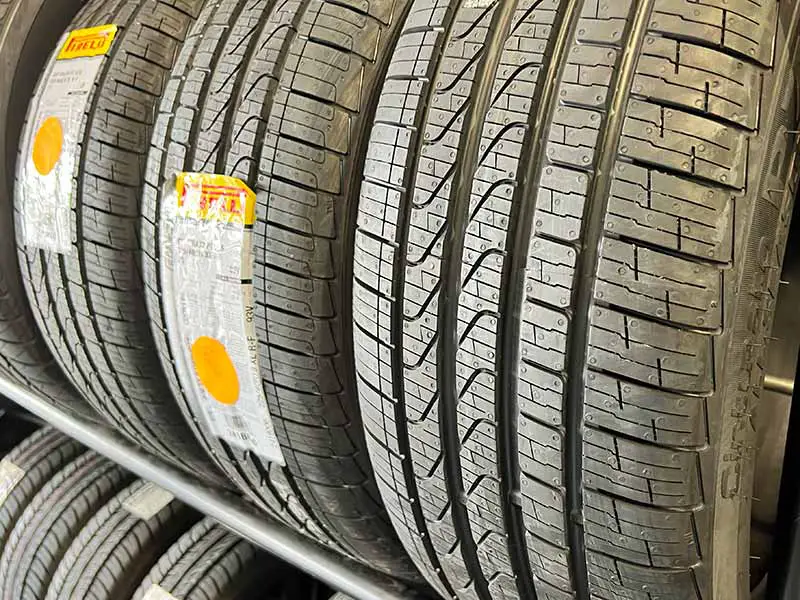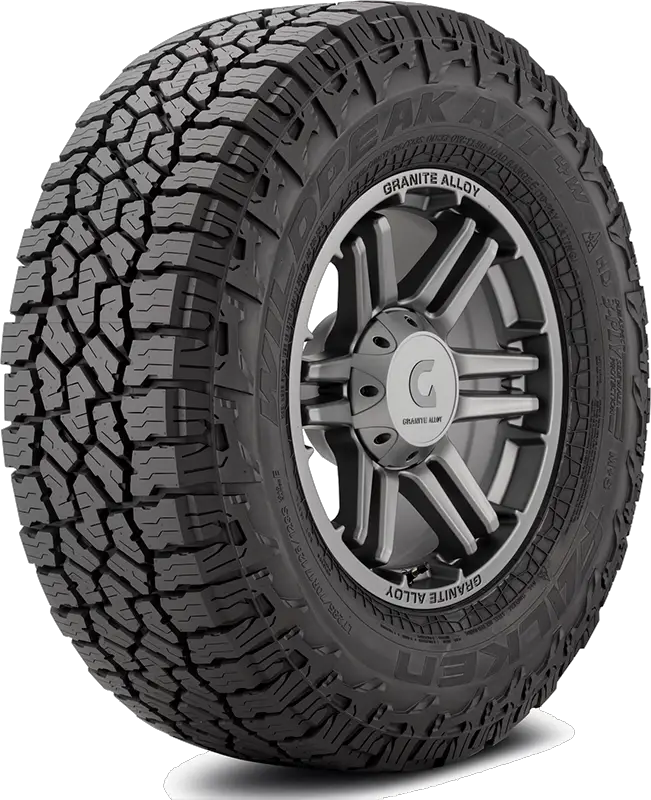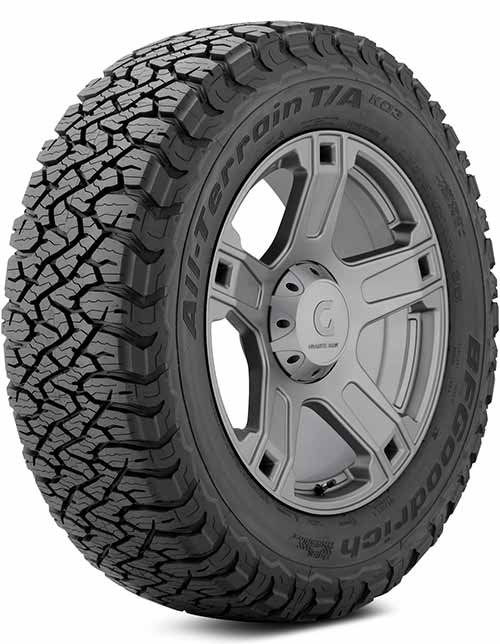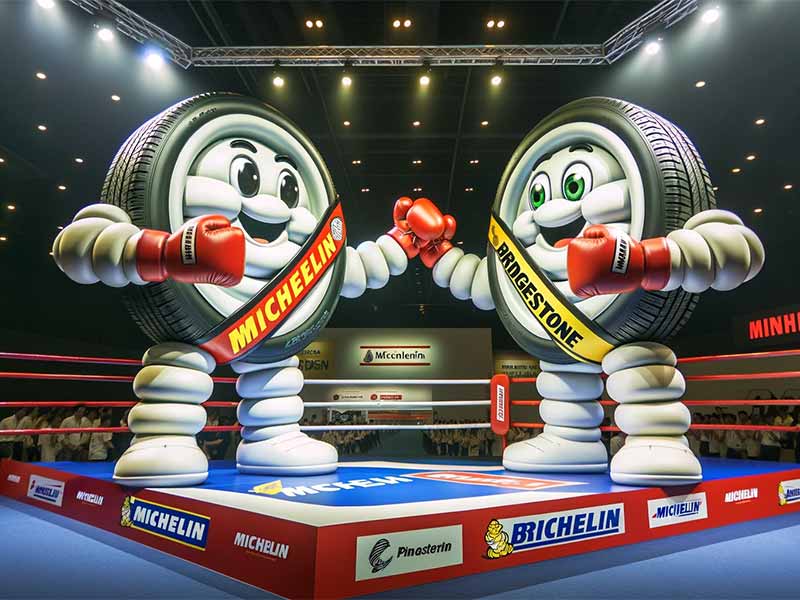A new set of tires can be quite expensive, but bargains can be found if you know what to look for and understand what tire features are less important to you.
How Much Do New Tires Cost?
The average price for common size new tires typically costs $125 per tire. You can find similar tires for as low as $80 per tire or much more depending your needs.
You should also expect to pay at least $15 per tire for mounting and balancing.
Of course, tires can be less expensive than this, and tires for a sports car or large pickup truck can be significantly more expensive. But for a common compact car or average sedan, this is a fairly common price estimate.
Let’s take a closer look.
How Much Do 4 New Tires Usually Cost?
The cost of tires depends on a lot of different variables. Tire size, vehicle usage, vehicle manufacturer requirements, etc.
Even if your tire size and needs aren’t typical, we think we can provide you with some valuable insight.
How Much Do Tires Cost At…
The cost of tires varies quite a bit between most shops that offer quality tires. Also, some lesser-known and lesser-expensive brands may only be offered through certain tire shops.
We researched tire prices at several tire shops and found some interesting results. We used one of the most popular tire sizes currently (225/65R17) and compared the prices.

Walmart – $80-$275
We found that some of the cheapest tires can be found at Walmart. The biggest complaints were the unusually long wait times and poor customer service.
Walmart has unique tire brands they contract with tire manufacturers to produce for them. These are moderately priced tires with corners cut in areas that won’t be of a big concern to the average Walmart customer.
Walmart does also offer some very inexpensive services as well, however, you’ll likely need to expect to suffer through a long and less-than-ideal service experience.
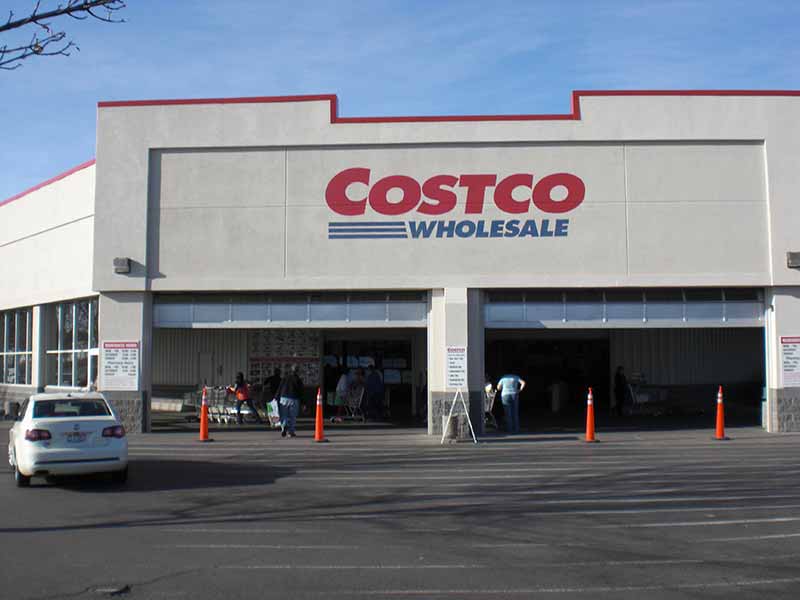
Costco – $174 – $275
Costco has gained a reputation as the go-to retailer for the cheapest tires, but we didn’t find that to be true in our research. While there are some good deals to be had, Costco wasn’t the cheapest choice for tires or services.
Due to their large size, they can negotiate deals on select tire brands but they may not have the exact tire size that fits your car’s rim size.
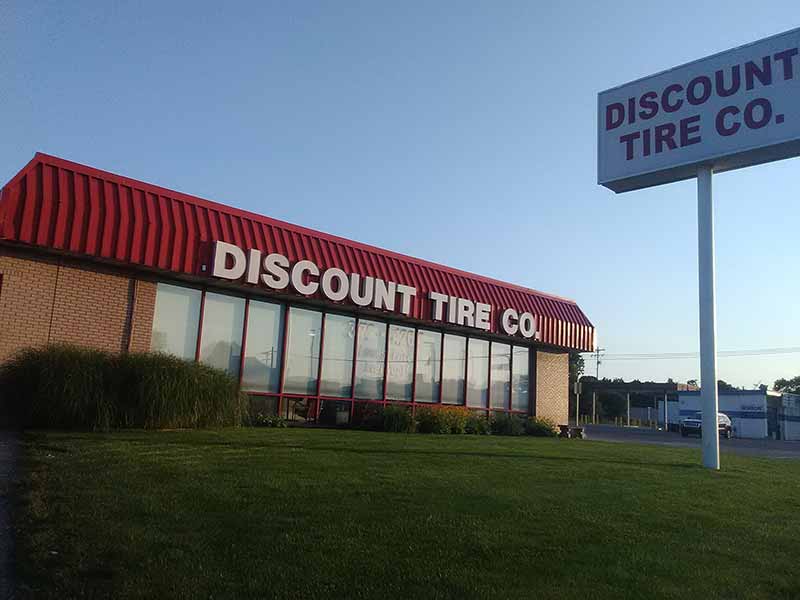
Discount Tire – $97 – $321
Having previously worked with Discount Tire in the distant past, I may sound biased, but I am a fan. They aren’t the cheapest choice but they are reasonable and offer many services for free that others require a charge for. Tire rotation is free, and they’ll patch your tire for free even if you didn’t purchase it from them.
Service can be hit or miss. If the tire shop is overwhelmed service will suffer. Although I think it’s fair to say this is true of almost any tire shop you visit.
They offer generous road hazard warranty packages as well if that’s something you’re interested in purchasing.
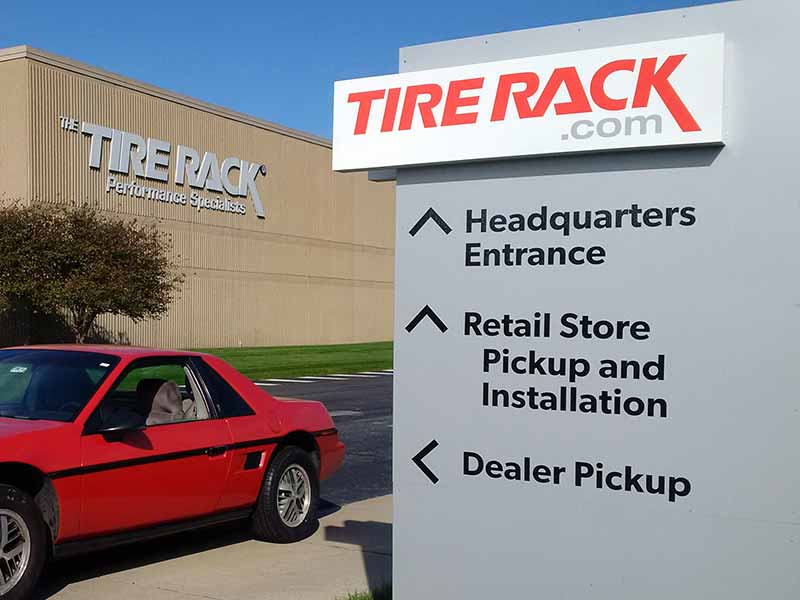
Tire Rack – $122 – $323
Tire Rack has a great reputation as an online tire retailer where you can find tires from a wide range of tire manufacturers. Their prices are competitive but you will need to visit your local tire shop to have your tires mounted and balanced.
There are also mobile tire services these days that can come to you and mount your new tires for you right in your driveway or place of work.
Other online retailers tend to offer tires for even less and offer a wider selection if you’re looking to save more money.
How Much Should I Spend On Tires?
Tires are a relatively expensive purchase and not one that we necessarily get a lot of joy from, but they are very important. Arguably, they are the most important component regarding the safety of your vehicle.
This doesn’t mean you need to spend all of your money on tires though. You just need to be informed about what’s important and keep in mind what matters to you personally.
Some features of tires are considered nice-to-haves and others are critical.
Are Expensive Tires Worth It? Are Cheap Tires Bad?
It’s important to understand that the difference between cheap and expensive tires isn’t black or white and is more like shades of grey. Expensive tires tend to perform well in many areas while cheap tires may do well in some areas and not perform well in others that may be less important to you.
For instance, it’s common for expensive tires to be very quiet and have a better ride quality while also lasting a very long time. Cheaper tires may last just as long or even longer than a tire two or three times as expensive but can be noisy or stiff.
A friend of mine told me his criteria for which tires to buy are to make sure they are round and black. He has fairly low expectations from his tires. Not everyone feels this way though. If you’re pickier, you’ll want to spend time reading tire reviews.
What To Look For When Buying New Tires
We’ve created an in-depth article about how to buy tires that we recommend you check out, but we’ll summarize some key points.
Tire Sizes
You’ll want to meet or exceed the specifications of the tire that your car or truck came with new. Things like speed rating or load capacity for instance. Most tires that fit your vehicle will likely meet these requirements, but some of the cheaper options may have cut corners in some key areas that may be important for use on your car or truck.
Just make sure to match all of the measurements listed on the tire sidewall. Here’s a diagram that explains each of them.
We don’t have the space in this article to discuss all of the details of tire sizes, but if you’d like to learn more about what each of these measurements means, be sure to check out our detailed article about tire sizes.
UTQG
Most tires sold in the United States will have 3 measurements that are known collectively as the Uniform Tire Quality Grade. These are:
- Treadwear
- Traction
- Temperature
These are government-standardized tests that help give you an apples-to-apples way to compare tires.
- The Treadwear rating can give you an idea of how long the tires will last before wearing out.
- The Traction rating can give you an idea of how well the tires grip wet road surfaces
- The Temperature rating can give you an idea of how well they can resist the heat created by highway speeds.
For more information about the importance of these ratings, be sure and check out our detailed article about UTQG ratings.
Is It Better To Buy Cheap Or Expensive Tires?
If ride quality, road noise, and high performance are very important to you, you’ll probably want to buy more expensive tires.
If you just want tires that will last a while and not break the bank, cheap tires will probably do what you need them to do.
Do More Expensive Tires Last Longer? Do Cheap Tires Wear Faster?
In general, expensive tires tend to last a long time as well as be quite comfortable. Expensive tires will do more things that tires do better than a comparable cheap tire.
It really depends on what the focus of the tire is though. High-performance tires, whether expensive or cheap, don’t usually last very long. All-season tires usually last 50,000 to 60,000 miles while high-performance tires typically last around half as long at 30,000 to 35,000 miles.
I have performance tires on my car and the expensive Michelin tires that are OEM only lasted me 30,000 miles. When it was time to replace them I decided to spend 1/3 the amount that the Michelin’s cost and purchased some inexpensive tires by Falken instead. They should last nearly as long and even if they don’t I’ll still be able to buy more Falkens and still have spent less.
Should I Replace All 4 Tires?
Many will tell you that it’s important to replace all four tires every time you need to replace a tire. This just isn’t true. Even on all-wheel drive cars and trucks where it is more often recommended to do so, it usually isn’t worth spending the money when you only have one tire that’s damaged and needs to be replaced.
The arguments for replacing all four tires at the same time is to maintain consistent tread depth at every corner to have similar traction characteristics and not have significantly different rolling diameters between any of the tires.
The truth is that you do want to try to keep tire tread depth similar across the same axle, but some differences will always exist.
If all four tires are in poor shape then you should consider replacing them all at the same time. If you only have 1 or 2 tires that are in bad shape, you probably don’t need to replace all 4 tires at the same time.
However, you should always follow the recommendations of your vehicle manufacturer. If they recommend replacing all of your tires at the same time I won’t argue with them on that point.
Is It OK To Replace Only 2 Tires?
Most people will find that they only need to replace 2 tires. Most cars and trucks will tend to wear tires more on the front or the rear and not evenly across both axles.
If the tread depth on two of your tires is still above 4/32″ and they have even tread wear, there’s really no reason to replace them most of the time. Just purchase 2 replacement tires and mount them on the rear axle. Move the worn tires to the front axle and you should be good to go.
Is It OK To Replace Just 1 Tire?
Sometimes there’s no reason to buy 2 new tires. If your other tires are in good shape with 7/32″ or more of reaming tread, it should be fine to simply replace just one tire and keep the other 3 old tires.
A common scenario where you may face this question is with flat tires. If you suffer a flat and tire wear for the others is still good it should be acceptable to just replace one tire. I do recommend trying to match the other tires, however. Purchase a replacement tire that is the same brand and model to try to keep the performance characteristics similar at each corner of your vehicle.
How Much Does It Cost To Mount And Balance 4 Tires?
The cost of the tires isn’t the only consideration. Installation costs shouldn’t be overlooked. It’s usually quite inexpensive, but if your budget is tight and you’re trying to stretch your dollar, you shouldn’t overlook other costs.
Mounting and balancing costs anywhere from $15 to $30 per tire. This can add up. Especially if the mounting and balancing fees don’t include valve stems or the tire disposal fees.
Usually, the more expensive mounting and balancing charges include most of the additional items or services that may also need to be performed.
The less expensive shops may simply break out the fees and only charge you for individual services if required, while still being roughly the same amount overall.
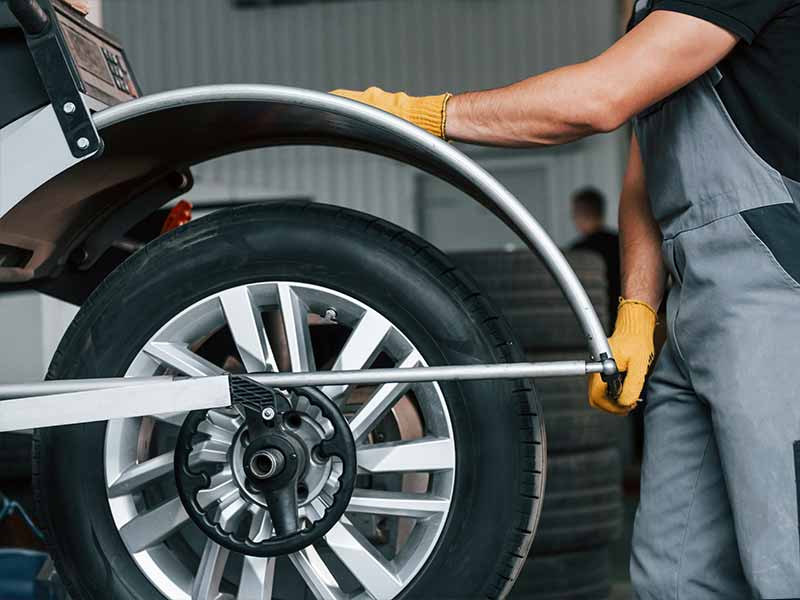
Do I Need An Alignment After Replacing My Tires?
Wheel alignment is an important part of tire maintenance but isn’t always required when you purchase a new set of tires. If your old tires were good tires with good tire life and even wear, there probably aren’t any alignment problems that need correction.
We do recommend having an alignment performed every 10,000 miles to correct for suspension system wear and tear that causes your alignment to drift over time. If you’ve had an alignment fairly recently and your old tires looked good but are just worn out, you can safely skip this service for now.
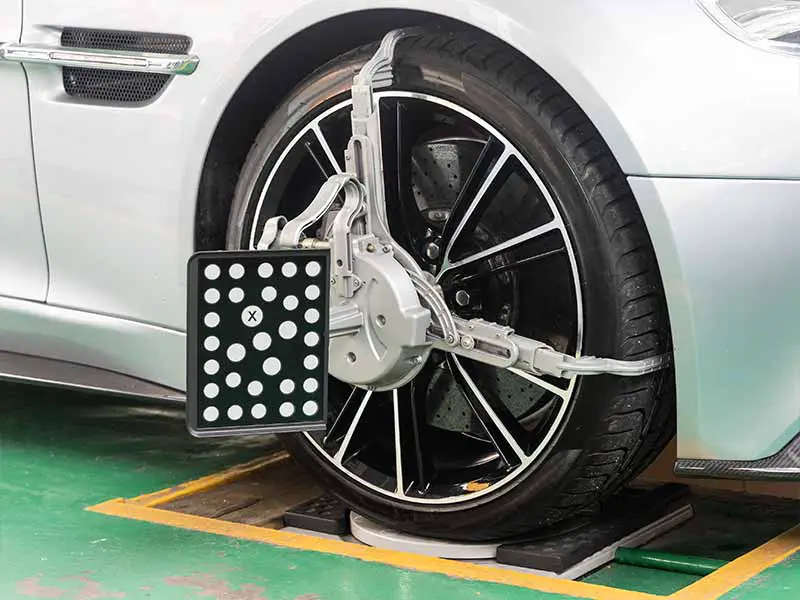
Should I Replace TPMS Sensors With New Tires?
TPMS sensors last 5 to 10 years and will need to eventually be replaced. New tire pressure monitoring system sensors usually won’t break the bank, but they don’t need to be replaced unless your car or truck is nearing the 10-year mark or you’re having communication issues or other warning indications on your dashboard.
Resources
Below are some links you may find helpful when learning about tires
- How to save money when buying replacement tires – Consumer Reports
- Tire price guide – How much are tires? – Discount Tire
Final Thoughts
Tires are an investment in your safety, but paying less doesn’t mean you have to compromise on safety. Just because you didn’t want to pay for the most expensive tires you could fit on your car or truck doesn’t mean you’re putting yourself at risk.
Cheaper tires usually just mean that they don’t perform well in every category. Consider what tire features are important to you and make your choice based on that and not marketing hype.
Good luck and happy motoring.
